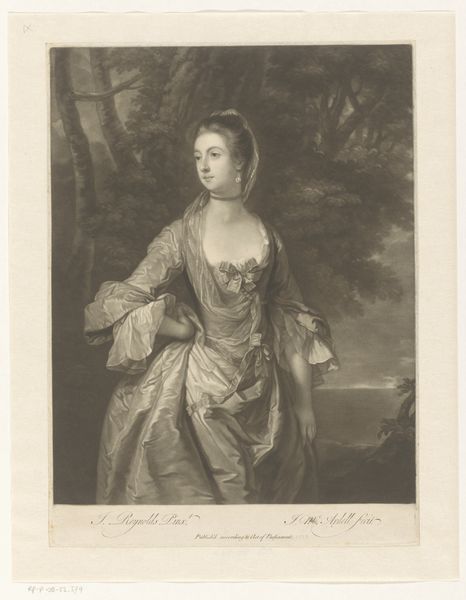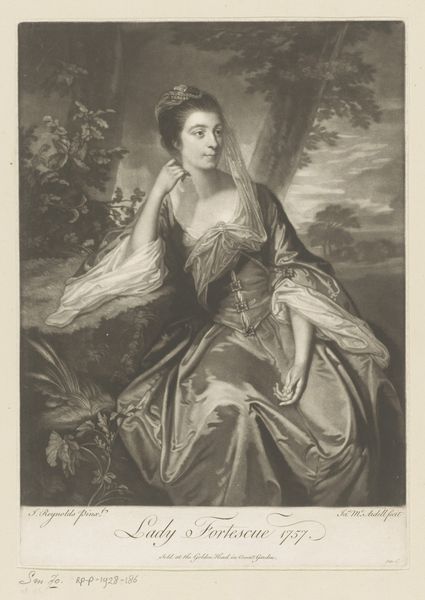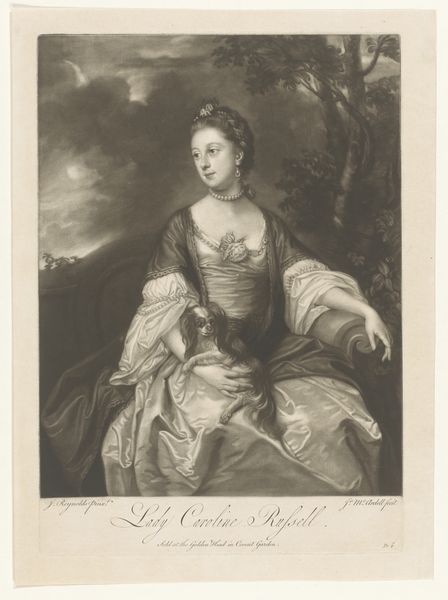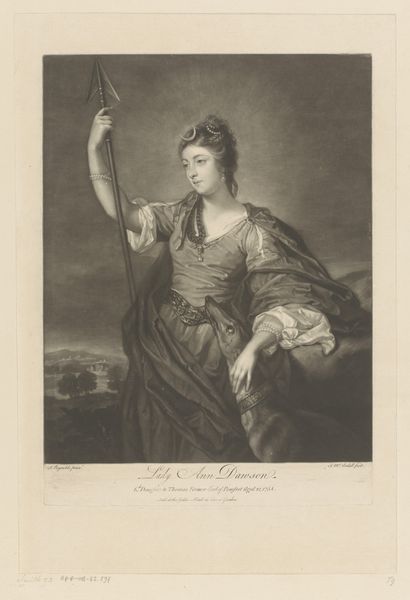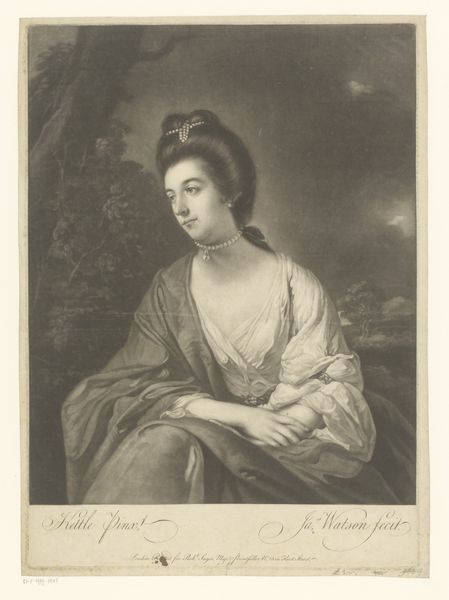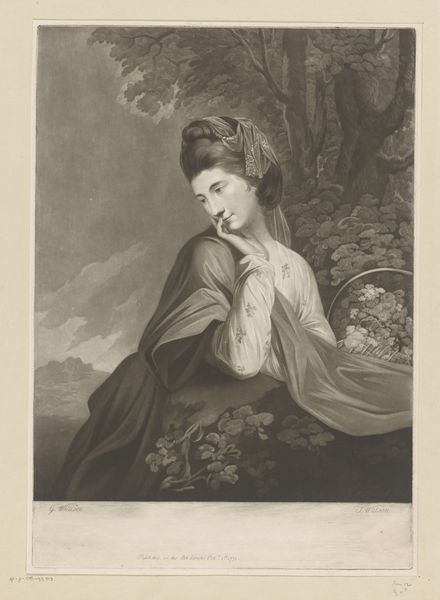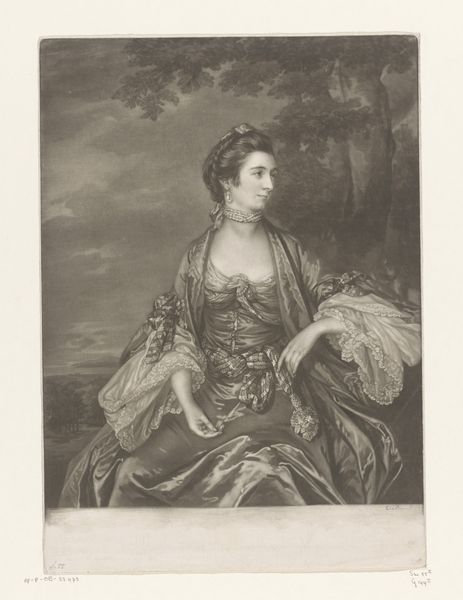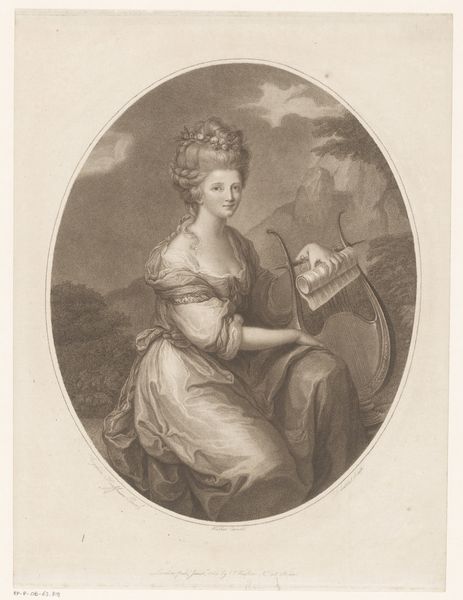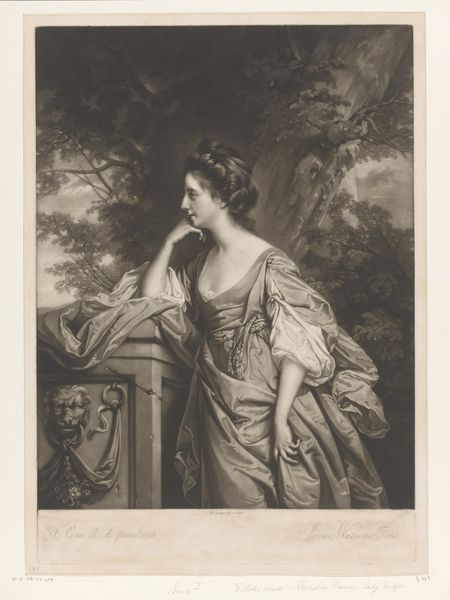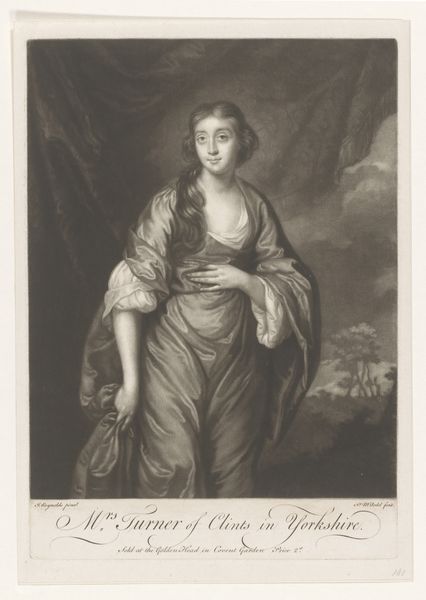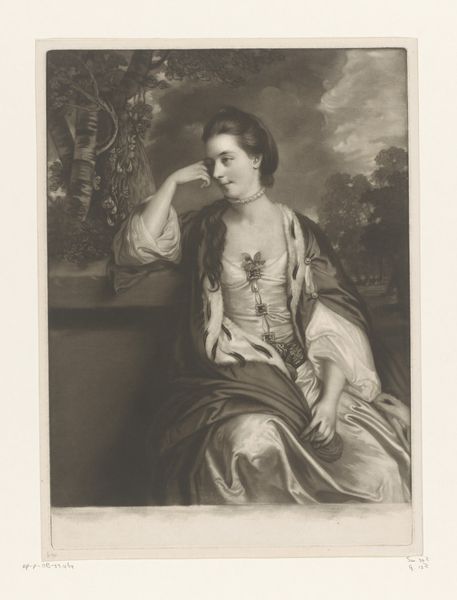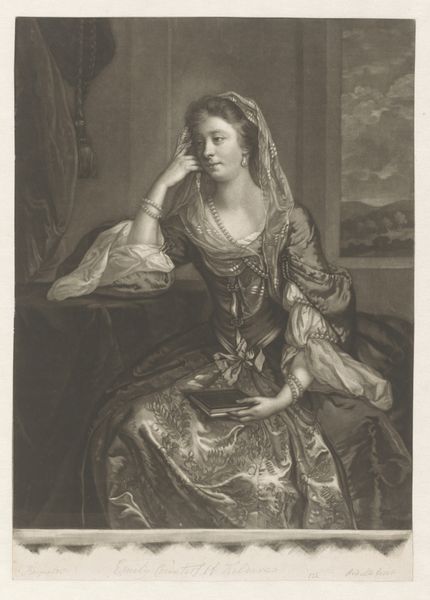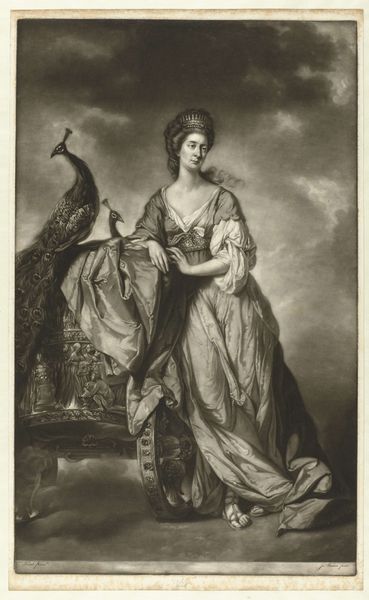
Dimensions: 452 × 353 mm (image); 501 × 354 mm (plate); 583 × 419 mm (sheet)
Copyright: Public Domain
Editor: Here we have James Watson’s print, “Margaret, Countess of Carlisle,” from 1773. It's an engraving on paper and evokes a sort of pastoral dreaminess. She’s in a landscape, elegantly posed. How do you interpret this work in the context of its time? Curator: This portrait encapsulates the Romantic era's fascination with both nature and the individual. It's interesting to think about how Watson, through the engraving process, mediates Reynolds' original painting. This work speaks volumes about the construction of femininity and power in the late 18th century. How do you see the Countess’s presentation of self relating to the landscape around her? Editor: She seems almost… vulnerable, but also regal. The way she’s holding the branch with flowers almost makes her appear like a modern day influencer using a prop to subtly send a message. Is there something intentional about setting her in the natural world this way? Curator: Absolutely. The natural world served as a backdrop against which aristocratic identity was performed. Romanticism positioned nature as authentic in contrast to court artifice. What do you think about how the soft focus and flowing fabrics might relate to emerging ideas of sensibility and feeling associated with women at the time? How might this ideal both empower and confine women? Editor: That makes me think about the limited roles women of her status had, even within nature. They're still performing a part. It’s romanticized but still…constructed. So even here she's representing something—beauty, privilege, perhaps even fragility. Curator: Exactly! And by recognizing this performance, we can start to question whose stories are being told, and from whose perspective. It’s vital that we look at art as a participant in the broader historical conversation about class, gender, and power, which is what you are picking up on so well. Editor: I guess it shows that even idyllic scenes can carry complex messages. Thanks for sharing your perspective. It’s much more layered than I first realized. Curator: My pleasure. Engaging with art is always an ongoing process of questioning, learning, and unlearning.
Comments
No comments
Be the first to comment and join the conversation on the ultimate creative platform.
